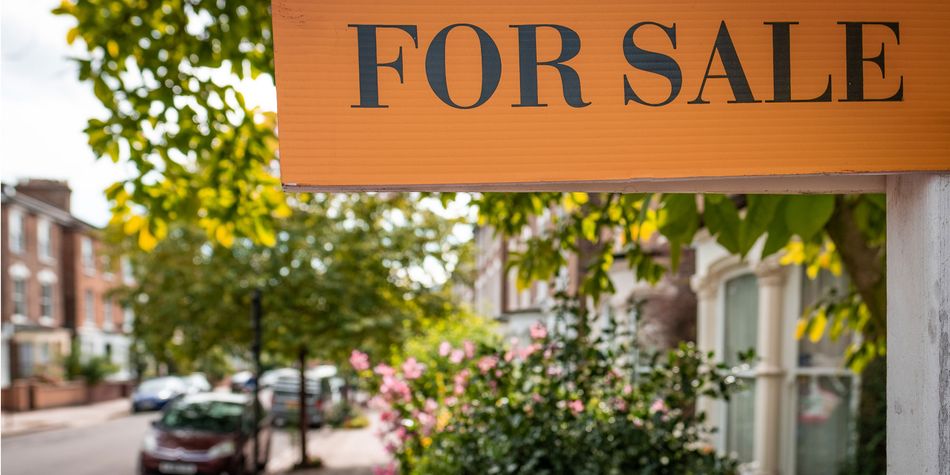Construction of new-build homes is increasing, according to the latest figures. The National House Building Council (NHBC) says the number of homes registered to be built in the third quarter of this year was 8% higher than in the same period in 2024.
With more new homes in the pipeline, we’ve rounded up what buyers should consider if they’re thinking about purchasing a new build.
Our tips draw on expert advice from mortgage brokers, estate agents and the New Homes Quality Board to help you navigate the process of buying a new-build property.
1. Do your homework on the builder
If you’re considering a new-build property, it’s worth doing your homework on the developer.
Daniel Elliot, of Hamptons estate agents, told us you should ‘visit the development to check the build quality and specification of inventory that is included in the purchase price’.
If no properties are finished on the development you’re looking at, it’s a good idea to visit another site by the same developer. This also gives you the chance to speak to residents about their buying experience and what they think of their homes.
Elliot also reminds buyers that showhomes present properties in their best possible light. He advises asking questions about the specific plot you’re interested in, as features such as garden size, positioning and natural light can vary significantly across a development.
2. Expect a different buying timeline
Buying a new-build home usually involves a different timetable from purchasing an existing property.
Emma Toms, of the New Homes Quality Board, explains: 'Unlike older homes, you exchange contracts much sooner in the process, even before the property is built. That means deposits, mortgage agreements and financial advice must be secured early.'
Nicholas Mendes of broker John Charcol warns that 'developers typically expect you to exchange contracts within 28 days of reservation'. This means you may need to be prepared for a significant amount of paperwork much earlier in the process.
3. Check the lending criteria first
Mendes says lenders often have stricter requirements for new builds, particularly flats. He said: 'Some will cap loan-to-value (LTV) ratios at 75% for apartments, others may limit incentives, and a few look more cautiously at specific construction types or developer reputations.'
Speaking to a mortgage broker can help you find the best deal while navigating the lending criteria that apply to new-build properties.
4. Explore which new-build schemes you qualify for
New-build mortgage schemes can help with the cost of buying a property, and there are several options available.
For example, Own New offers significantly lower mortgage rates for new builds, with the average two-year fixed-rate through its Rate Reducer scheme ranging from 0.53% to 2.47% depending on your LTV. Own New says its mortgages are available through a wide range of homebuilders, including Barratt Homes, David Wilson Homes and Redrow, and are offered in partnership with major lenders.
Another option is the Deposit Unlock scheme, which enables buyers to buy a new-build home with just a 5% deposit. Developers insure the mortgage under this scheme, reducing the risk for lenders and making smaller deposits possible.
Other schemes include First Homes, which offers discounted new-build properties, and Shared Ownership, which enables buyers to purchase a share of a property from a housing association and pay rent on the remainder.
5. Expect move-in dates to shift
As is often shown on programmes such as Grand Designs, building projects can take longer to complete than first anticipated, so your plans should allow for potential delays.
Toms says you may reserve a property before anything is built. This offers customisation options but also means that move-in dates are only estimates and can shift. As a result, removals, rental agreements and other arrangements need to stay flexible.
Mendes adds that mortgage offers usually last six months, but new-build completions can slip. Some lenders will extend offers, some won’t, and others provide longer validity periods specifically for new builds. Understanding this early helps reduce the risk of an offer expiring.
6. Check what else is planned for the area
When viewing a development, it’s important to understand both the current phase and what else is planned for the area.
Elliot suggests checking future development plans, as additional nearby buildings or later construction phases could affect property values or day-to-day quality of life.
Toms also recommends considering practical details, such as bin stores, play areas, substations, gradients and future building phases, as these can influence privacy, noise levels, parking and resale value.
7. Beware of ongoing charges
Even if you buy a freehold new-build property, you may still have to pay estate fees.
Toms explains that many new-build developments have private roads, green spaces or communal areas that are managed by third parties. These come with ongoing maintenance or service charges that some first-time buyers don’t expect.
Before buying, make sure you understand whether these costs apply and consider whether they could put off future buyers when you decide to sell.
8. Check the warranty
A key difference between new-build homes and older properties is that new builds come with a warranty, typically lasting 10 years.
Toms stresses that, although you're covered for this period, it’s up to you to report defects within the first two years. A pre-completion inspection and an early snagging list are essential to avoid issues going unresolved.
Elliot also advises making sure you understand exactly what is covered and what isn’t under the warranty for your specific property.
9. Consider a snagging survey
A snagging survey is an inspection of the property - before completion - to ensure it meets the standards that the developer has agreed to meet.
Elliot recommends that buyers arrange this type of survey to ensure any issues are ironed out before you move in.
Where are new-build homes going to be built?
The National House Building Council (NHBC) reports that there were 30,643 new-build registrations in the third quarter of 2025.
Daniel Pearce of the NHBC said: 'Our latest figures show modest growth in home building, with a steady increase in registrations since the start of the year.'
Pearce expects 'steady growth in new homes registration' in the future, pointing to government investment and planning forms as drivers.
The NHBC also publishes the number of new-build registrations in areas across the UK.
Source: The National House Building Council







